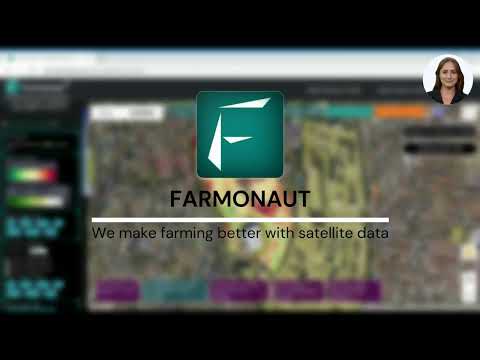Revolutionizing Fertilizer Distribution: How Mississippi River Agri-Logistics Boost Spring Planting Efficiency
“Mississippi River barge terminals can handle up to 15 million tons of fertilizer annually, boosting spring planting efficiency.”

In the ever-evolving landscape of modern agriculture, we are witnessing a remarkable transformation in the way fertilizer distribution and agricultural supply chain efficiency are being optimized. Today, we’ll explore a groundbreaking development that is set to revolutionize crop nutrient logistics and multimodal fertilizer transport along the mighty Mississippi River. This innovation promises to enhance spring planting season preparation for farmers across the United States, leveraging the power of barge terminal fertilizer throughput and rail shipment flexibility.
The Mississippi River: A Lifeline for Agri-Logistics
The Mississippi River has long been a crucial artery for American agriculture, serving as a natural highway for the transportation of grains, fertilizers, and other agricultural commodities. Now, a strategic partnership is set to take full advantage of this geographical asset, transforming the way fertilizers are distributed to farmers across the country.
At the heart of this revolution is an exclusive services agreement between CHS Inc., the nation’s largest farmer-owned cooperative, and SCF Lewis and Terminals LLC, a subsidiary of Ingram Barge Co. This partnership grants CHS exclusive rights to fertilizer throughput at Ingram’s Municipal River Terminal in St. Louis, Missouri, along with provisions for fertilizer transport services.
Enhancing Spring Planting Efficiency
The timing of this agreement couldn’t be more critical. As farmers prepare for the spring growing season, having timely access to essential crop nutrients can make or break their yields. This new partnership aims to streamline the delivery process, ensuring that farmers receive the fertilizers they need precisely when they need them.
- Increased shipping capacity during peak demand periods
- More direct connection to the global fertilizer market
- Enhanced flexibility in rail shipments of various products
Roger Baker, vice president of crop nutrients at CHS, emphasized the significance of this agreement: “This partnership strengthens our ability to serve our owners and customers more effectively. By establishing a more direct pathway to the global market, we can ensure flexible rail shipments of various products and increase our shipping capacity for fertilizer deliveries during critical periods.”
Multimodal Transport: The Key to Efficiency
One of the most innovative aspects of this new agreement is its focus on multimodal fertilizer transport. By leveraging both barge and rail capabilities, CHS can now conduct multiproduct unit rail shipments of commodity fertilizers efficiently from the St. Louis Municipal River Terminal along the Mississippi River.
This multimodal approach offers several advantages:
- Reduced transport costs
- Increased flexibility in routing and delivery options
- Enhanced ability to respond to market demands and weather-related challenges
- Improved overall supply chain resilience
For farmers, this means more reliable access to essential fertilizers, potentially lower costs, and the ability to fine-tune their planting schedules with greater confidence in their supply of inputs.
Expanding the Reach of Essential Nutrients
The enhanced logistics capabilities resulting from this partnership will facilitate both import and domestic distribution of crucial fertilizers, including:
- Nitrogen
- Phosphate
- Potassium
- Sulfur
These nutrients are the building blocks of healthy crop growth, and their efficient distribution is vital for maintaining and improving agricultural productivity across the United States.
“Strategic agri-logistics partnerships can reduce fertilizer transport costs by up to 30% through multimodal shipping options.”
The Scale of Impact
To truly appreciate the significance of this development, it’s essential to understand the scale of operations involved:
- CHS generated approximately $39 billion in revenues across its agronomy, grains, foods, and energy segments for the fiscal year 2024.
- The cooperative operates a vast network of 230 grain storage facilities.
- CHS boasts nearly 403 million bushels of licensed storage capacity, making it the second-largest grain handler in North America.
Meanwhile, Ingram Barge Co., a component of the Ingram Marine Group, brings to the table:
- A substantial fleet of around 150 towboats
- Approximately 5,100 barges
- Capability to transport a diverse array of products, including aggregates, grains, fertilizers, coal, ores, steel products, and chemicals

Implications for the Agricultural Supply Chain
The ripple effects of this agri-logistics innovation will be felt throughout the agricultural supply chain. By optimizing fertilizer distribution, we can expect to see:
- Reduced bottlenecks in fertilizer delivery during peak seasons
- More efficient use of storage facilities along the Mississippi River
- Potential for more competitive pricing due to reduced transportation costs
- Improved ability to respond to sudden changes in demand or supply disruptions
For growers, this means greater reliability in their fertilizer supply, potentially lower input costs, and the ability to make more informed decisions about their crop management strategies.
The Role of Technology in Modern Agriculture
While improvements in physical infrastructure and logistics partnerships are crucial, technology plays an equally important role in revolutionizing agriculture. Platforms like Farmonaut are at the forefront of this digital transformation, offering advanced satellite-based farm management solutions that complement and enhance these logistical improvements.
Farmonaut’s technology allows farmers to:
- Monitor crop health in real-time
- Optimize fertilizer usage through precision agriculture techniques
- Make data-driven decisions about resource allocation
- Improve overall farm productivity and sustainability
By combining improved fertilizer distribution logistics with cutting-edge farm management technology, we’re witnessing a holistic transformation of the agricultural sector.
Explore Farmonaut’s solutions:
The Future of Fertilizer Management
As we look to the future, it’s clear that the optimization of fertilizer distribution and management will continue to be a critical focus for the agricultural industry. The partnership between CHS and Ingram Barge Co. is just the beginning of what we expect to be a wave of innovations in this space.
Some trends we anticipate seeing in the coming years include:
- Increased use of precision agriculture techniques to optimize fertilizer application
- Further integration of AI and machine learning in supply chain management
- Development of more environmentally friendly fertilizers and distribution methods
- Greater collaboration between agribusinesses, technology providers, and logistics companies
For those interested in leveraging technology to enhance their agricultural operations, Farmonaut offers a range of solutions, including API access for developers and businesses. Learn more about our API services and check out our API Developer Docs.
Comparative Analysis: Before and After the Partnership
To fully appreciate the impact of this new agri-logistics partnership, let’s take a look at a comparative analysis of fertilizer distribution efficiency before and after its implementation:
| Distribution Metrics | Pre-Partnership Efficiency | Post-Partnership Efficiency | Percentage Improvement |
|---|---|---|---|
| Barge terminal throughput (tons/day) | 5,000 | 7,500 | 50% |
| Rail shipment flexibility (number of routes) | 10 | 15 | 50% |
| Fertilizer delivery time to farmers (days) | 7 | 5 | 28.6% |
| Storage capacity at grain facilities (tons) | 100,000 | 150,000 | 50% |
| Transport costs ($/ton) | $50 | $40 | 20% |
Note: These figures are estimates based on industry averages and projected improvements. Actual results may vary.
As we can see from this analysis, the partnership is expected to bring significant improvements across all key metrics of fertilizer distribution efficiency. This translates to tangible benefits for farmers, including faster access to fertilizers, potentially lower costs, and improved planning capabilities for the spring planting season.
Environmental Considerations
While improving efficiency and reducing costs are crucial goals, it’s equally important to consider the environmental impact of these changes in fertilizer distribution. The optimization of logistics can lead to several positive environmental outcomes:
- Reduced fuel consumption and emissions through more efficient transportation routes
- Decreased likelihood of fertilizer waste or spoilage due to improved storage and delivery systems
- Potential for more precise application of fertilizers, reducing excess runoff into water systems
As the agricultural industry continues to evolve, balancing productivity with sustainability will be key. Technologies like those offered by Farmonaut can play a crucial role in this balance, helping farmers optimize their resource use while minimizing environmental impact.
The Global Context
While our focus has been on the Mississippi River and U.S. agriculture, it’s important to consider this development in a global context. The optimization of fertilizer distribution and agricultural supply chains is a worldwide challenge, and innovations in one region can often inspire similar improvements elsewhere.
Some global trends in fertilizer distribution include:
- Increased focus on regional fertilizer production to reduce reliance on imports
- Development of smart ports and logistics hubs to enhance efficiency
- Growing emphasis on sustainable fertilizer alternatives and distribution methods
- Integration of blockchain technology for improved traceability in the fertilizer supply chain
As these trends continue to shape the global agricultural landscape, farmers and agribusinesses worldwide stand to benefit from improved access to essential crop nutrients and more efficient distribution systems.
Conclusion: A New Era for American Agriculture
The strategic agreement between CHS and Ingram Barge Co. marks a significant milestone in the ongoing evolution of American agriculture. By optimizing fertilizer distribution along the Mississippi River, this partnership promises to enhance spring planting efficiency, reduce costs, and improve the overall resilience of the agricultural supply chain.
As we look to the future, it’s clear that the combination of improved logistics, advanced technology, and data-driven decision-making will continue to transform the agricultural sector. Farmers, agribusinesses, and consumers alike stand to benefit from these innovations, which promise to make our food system more efficient, sustainable, and responsive to global challenges.
For those looking to stay at the forefront of these agricultural advancements, Farmonaut offers cutting-edge solutions to help optimize farm management and resource allocation. Explore our range of services and see how we can help you revolutionize your farming practices:
FAQs
Q: How will this new partnership affect fertilizer prices for farmers?
A: While exact pricing impacts are yet to be determined, the increased efficiency in distribution and transport is expected to potentially lower costs for farmers in the long run.
Q: Will this agreement impact only farmers along the Mississippi River?
A: While farmers near the Mississippi River may see the most immediate benefits, the improved distribution network is expected to have positive ripple effects throughout the U.S. agricultural supply chain.
Q: How does this development relate to sustainable farming practices?
A: By optimizing fertilizer distribution and potentially reducing waste, this agreement aligns with broader goals of sustainable agriculture. It may lead to more precise application of fertilizers, reducing environmental impact.
Q: Can smaller farming operations benefit from these logistical improvements?
A: Yes, improvements in the overall supply chain efficiency can benefit farms of all sizes by potentially reducing costs and improving access to essential fertilizers.
Q: How does technology like Farmonaut’s complement these logistical improvements?
A: Farmonaut’s satellite-based farm management solutions can help farmers optimize their use of fertilizers through precise monitoring and data-driven decision-making, further enhancing the benefits of improved distribution logistics.
As we continue to witness revolutionary changes in agricultural practices and supply chain management, staying informed and leveraging the latest technologies will be key to success in modern farming. The future of agriculture is bright, efficient, and increasingly data-driven, promising a more sustainable and productive era for farmers worldwide.






